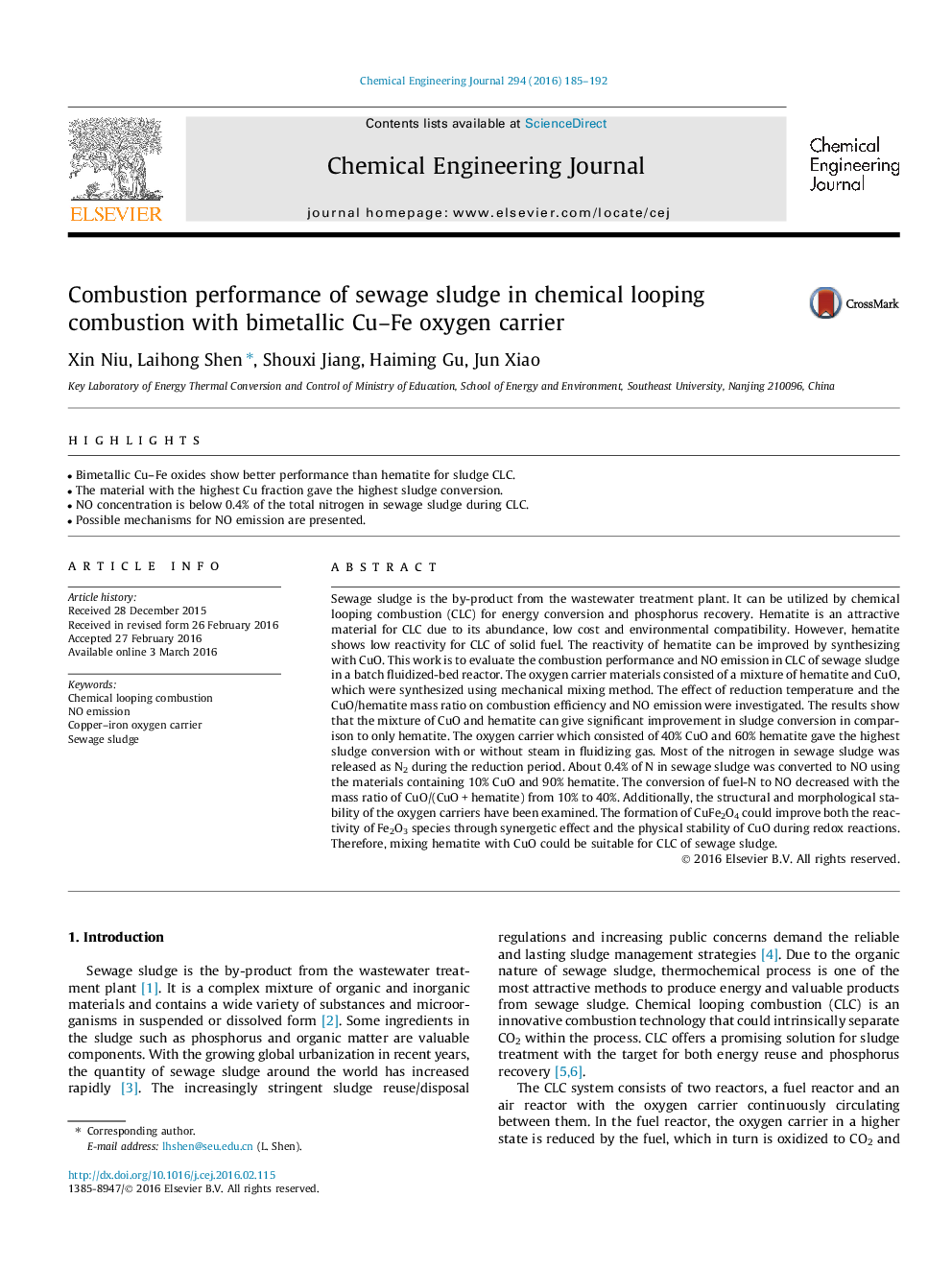| کد مقاله | کد نشریه | سال انتشار | مقاله انگلیسی | نسخه تمام متن |
|---|---|---|---|---|
| 145708 | 456349 | 2016 | 8 صفحه PDF | دانلود رایگان |
• Bimetallic Cu–Fe oxides show better performance than hematite for sludge CLC.
• The material with the highest Cu fraction gave the highest sludge conversion.
• NO concentration is below 0.4% of the total nitrogen in sewage sludge during CLC.
• Possible mechanisms for NO emission are presented.
Sewage sludge is the by-product from the wastewater treatment plant. It can be utilized by chemical looping combustion (CLC) for energy conversion and phosphorus recovery. Hematite is an attractive material for CLC due to its abundance, low cost and environmental compatibility. However, hematite shows low reactivity for CLC of solid fuel. The reactivity of hematite can be improved by synthesizing with CuO. This work is to evaluate the combustion performance and NO emission in CLC of sewage sludge in a batch fluidized-bed reactor. The oxygen carrier materials consisted of a mixture of hematite and CuO, which were synthesized using mechanical mixing method. The effect of reduction temperature and the CuO/hematite mass ratio on combustion efficiency and NO emission were investigated. The results show that the mixture of CuO and hematite can give significant improvement in sludge conversion in comparison to only hematite. The oxygen carrier which consisted of 40% CuO and 60% hematite gave the highest sludge conversion with or without steam in fluidizing gas. Most of the nitrogen in sewage sludge was released as N2 during the reduction period. About 0.4% of N in sewage sludge was converted to NO using the materials containing 10% CuO and 90% hematite. The conversion of fuel-N to NO decreased with the mass ratio of CuO/(CuO + hematite) from 10% to 40%. Additionally, the structural and morphological stability of the oxygen carriers have been examined. The formation of CuFe2O4 could improve both the reactivity of Fe2O3 species through synergetic effect and the physical stability of CuO during redox reactions. Therefore, mixing hematite with CuO could be suitable for CLC of sewage sludge.
Journal: Chemical Engineering Journal - Volume 294, 15 June 2016, Pages 185–192
